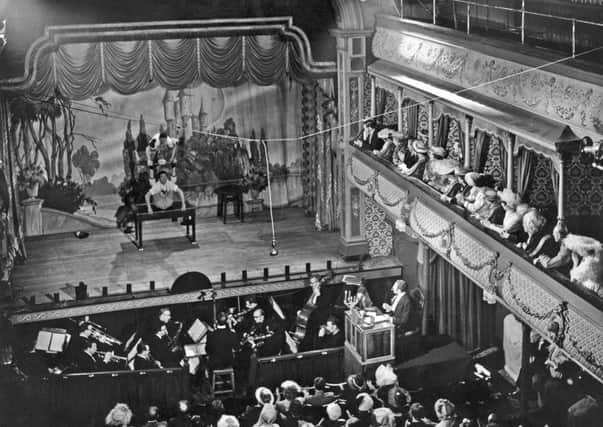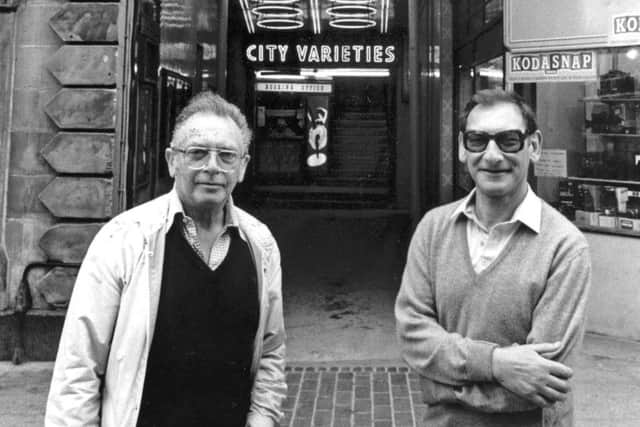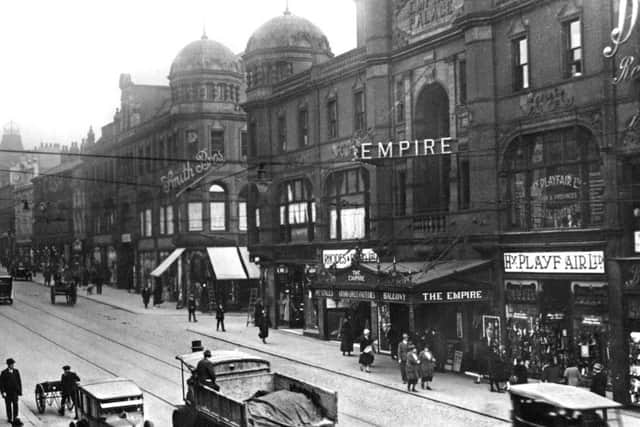Nostalgia on Tuesday: City's life on stage


In either location they would witness shows by travelling companies of players. At the Rose and Crown there was even a concert room, originally intended for performances of songs but also used for staging plays. In 1729 Leeds Mercury noted a presentation of the The Beggars’ Wedding.
But not everyone enjoyed the theatre, as the comments made by a Leeds vicar in June 1722 demonstrate. Leeds worthy Ralph Thoresby records in his diary: ‘He particularly inveighed against plays, which reproof was the more necessary, because we have had in the town a company of players six or eight weeks, which has seduced many and got abundance of silver’.
Advertisement
Hide AdAdvertisement
Hide AdLeeds first theatre was erected in Hunslet Lane in 1771 and was run by actor and manager Tate Wilkinson. Opening with a play A Word to the Wise, the building could accommodate 600, with illumination provided by wax candles. The theatre mainly featured comedies or comic operas, but sometimes Shakespeare was performed as well as pantomimes. During the 1860s the theatre was demolished and the New Theatre Royal and Opera House was built on the site, opening in 1867. This building was destroyed by fire in on the night of May 28, 1975 and did not rise from the ashes.


A second Leeds theatre was opened from January 1849, when the New Theatre was erected for William Schuking Thorne. The venue was noted for showing straight drama and variety acts. In 1874 it was rebuilt (opening on Christmas Eve), becoming known as the Princess Concert Hall, and subsequently the Princess’ Palace. Two further name changes occurred when the premises were titled Tivoli in 1898, and the Hippodrome in 1924, following extensive renovations. Closure came in 1933, the last performance was on June 10, with Count Berni Vici and his Royal Embassy Band. The building was not demolished until October 1967 having been converted for use as Schofield’s workshop and a warehouse in the intervening years.
The history of the Leeds City Varieties dates back to 1865. By the end of the 19th century the name City Varieties was adopted and has remained ever since.
Further theatrical development in Leeds before the mid-19th century saw Joseph Hobson build the Leeds Casino and Concert Hall during the late 1840s. Around 1856 Hobson extended the casino into Lands Lane and re-named it the Royal Alhambra. Five years later it was known as the New Amphitheatre and between 1862 and 1864 the name was changed to the Royal Amphitheatre. The building was destroyed by fire in 1876, reopening seven months later under Joseph Hobson as the Theatre Royal. In 1959 the structure was acquired by Schofields, and demolished, the old site now forming part of the Headrow Shopping Centre.
Advertisement
Hide AdAdvertisement
Hide AdBuilt at a cost of £62,000, the Grand opened in New Briggate on November 18, 1878 with a performance of William Shakespeare’s Much Ado About Nothing. The building was designed by George Corson (1829–1910), a Scottish architect active in Leeds, along with his assistant James Robinson Watson. The Grand achieved Grade II listing status on 15 February 1960.


In July 1885, the Coliseum on Cookridge Street opened as a concert hall and variety theatre, seating as many as 3,000. The old panorama shows, forerunners of motion pictures, were frequently put on at the Coliseum. In 1928 the theatre was taken over by Denman/Gaumont, and ten years later reopened as the Gaumont-Coliseum with seating for 1,700 patrons. The venue was a bingo hall until 1969, utilised by Leeds Playhouse for Theatre in Education, a film and TV studio until 1991, a nightclub called Creation which closed in 2004; it is currently a venue known as the 02 Academy owned by AMG (Academy Music Group).
The Empire Palace Theatre, designed by Frank Matcham, opened in August 1898. The theatre was altered in 1931 enabling it to show films as well as regular variety. The building was demolished in 1962, and replaced by the Empire Arcade, currently housing Harvey Nichols.
From the 1920s the Mechanics Institute, (or more commonly the Institute of Arts and Science) was used as a theatre and by 1925, became the Civic Playhouse after being taken over by the British Drama League. Admission was free, but a collection was taken at each performance, and patrons could support the theatre by becoming subscribers. Alterations took place in 1949 and the building was officially opened as the Civic Theatre in October of that year. During 1983, Claire Ferraby was commissioned to redesign the Civic. It put on a diverse programme of drama, concerts and recitals, light entertainment, opera and operettas, dance, pantomime, and children’s shows. The Civic closed in 2005 and the building reopened as the City Museum in 2008.
Advertisement
Hide AdAdvertisement
Hide AdLeeds Playhouse opened in 1970 in a building loaned to the Leeds Theatre Trust by the University of Leeds. The first performance was staged on Wednesday September 16, 1970, but the theatre was succeeded by the West Yorkshire Playhouse at Quarry Hill built as part of a major regeneration scheme. The foundation stone was laid by Judi Dench in 1989, and on completion, at a cost of £13 million, it was opened by Diana Rigg in March 1990. The building includes two theatres; the Quarry Theatre, seating 750; and the Courtyard Theatre, 350. The theatre’s first artistic director was Jude Kelly (1990–2002).